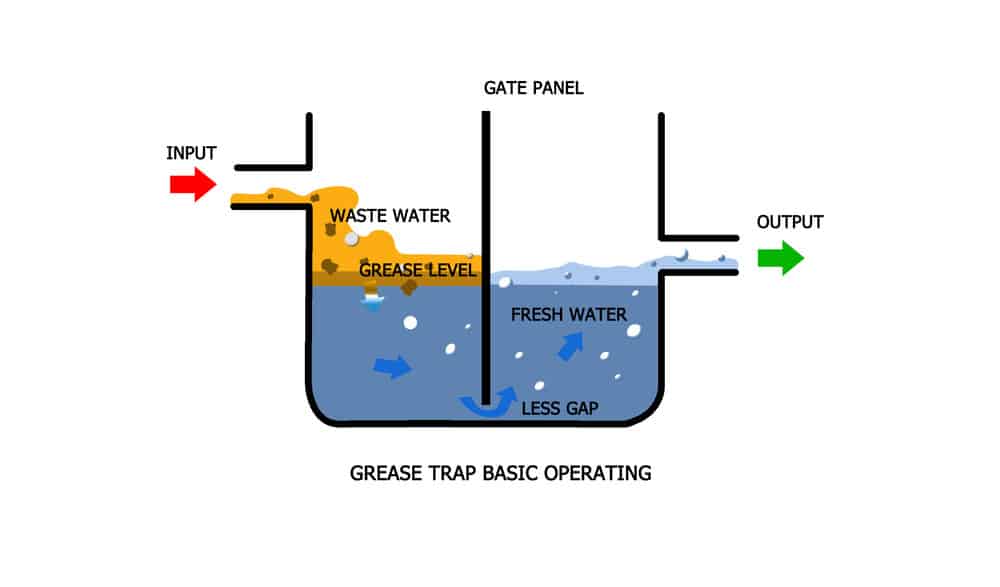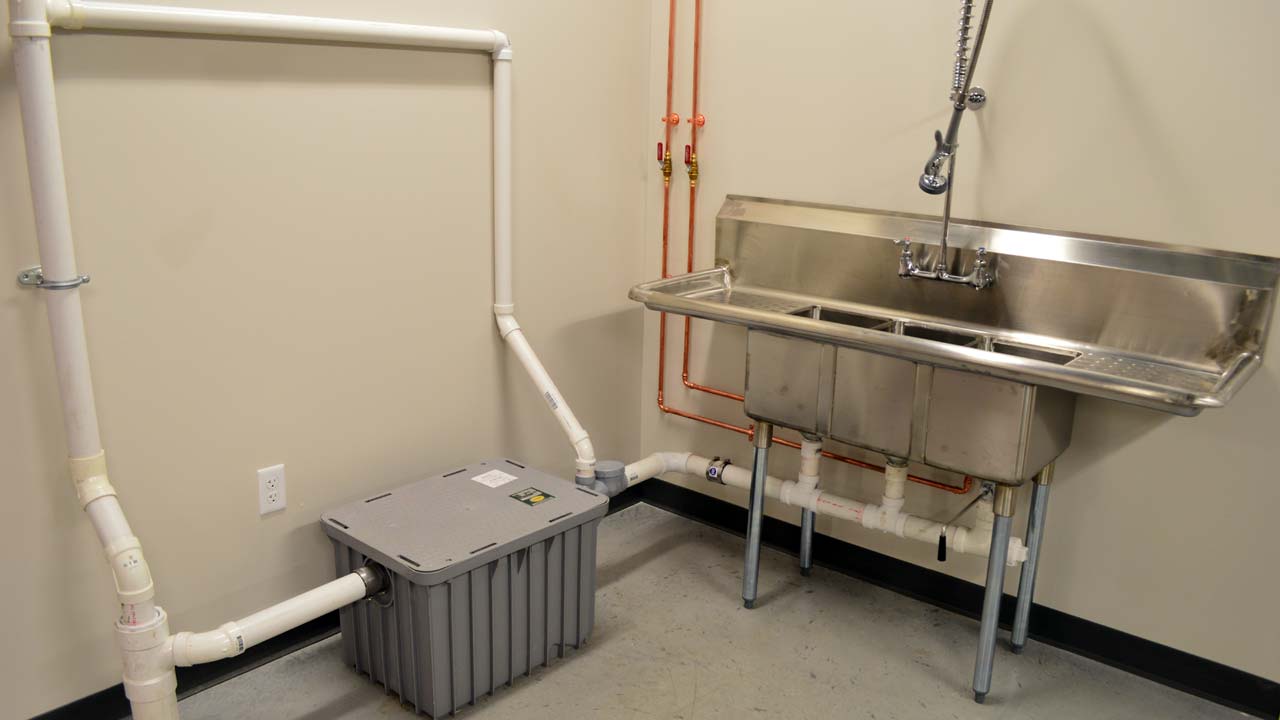
What is a Grease Trap and How does it Work?
February 11, 2020Cooking generates lots of greases; you’d be surprised to see the amount. The liquid is the form in which grease mostly is generated and it can be quite problematic if unchecked.
Through time, waste tends to build up from everything. Cooking is no exception to it, as many restaurants and fast foods generate grease daily.
But you’d be surprised to hear the problems that can occur by bbq-ing burger all day long. For example, a fast-food restaurant can accumulate a lot of waste in a day’s work. If that waste isn’t checked or thoroughly handled, it can singlehandedly clog neighborhood sewer lines, and even cause problems at the local water treatment facility.
Any uneducated fast-food restaurant worker, or any restaurant worker for that matter, could create these problems. This is because any uneducated person will think to dispose of the grease down the drain. This is something that is HEAVILY advised against, and the recommended solution would be to use a grease trap.
What is a Great Trap?
The simplest definition for a grease trap is that it is some kind of drain or waste pipe that is used to prevent the grease from going into our sewer systems.
These systems aren’t anything new and were even used the first time in the Victorian age, some ~300 years ago. They can come in any shape or size, as long as they adhere to the size needed to prevent cooking waste from going into the sewers.
However, these tools have multiple uses for any household or restaurant. A large use for these traps stems from the fact that cooking waste can produce a lot of foul odors. So, waste traps come in handy when preventing such odors from ever becoming a problem.
Another use is the fact that it prevents wastewater flow. This is particularly useful as wastewater can cause problems at your local water treatment facility, which is the facility responsible for bringing you freshwater.
If you happened to own an establishment that generates cooking waste, then do make sure to get a local inspector to ensure everything runs according to your local laws.
How Does a Grease Trap Work?
Essentially it works by effectively cooling grease coming from your pipes. All waste generated is stored in the same place. There, literary all types of waste that go into your pipes have their own place.
For example, food solids go at the bottom of the trap, while the primary waste is located in the center. The grease is located at the top layer, where it effectively flows due to the mixing of temperatures.
Not only that, but cooking waste is lighter than other waste generated, meaning that it can easily surface and stay in the top layers.
When floating there, the grease trap effectively “traps” it in place, preventing it from going anywhere. To use this method effectively, you need to empty the system when the sludge levels reach about 25%.
If you happened to be looking for someone to install a grease trap, then make sure to visit greasetrapdenver.com for more information about it.
Problems That Might Occur

Image source: lgeprimeplumbing.com
The only problem that might occur when using such a method is forgetting to dispose of the waste generated through time. Needles to say, this can become a very large problem, if the trap isn’t maintained thoroughly.
Through time, and through waste generation, the waste can thicken, meaning it will start escaping the trap and going into other pipes.
This can be a major problem as it will block any pipe it goes into. This not only results in a blockade of waste, but it will also prevent any wastewater from flowing out of your pipes. One problem leads to another and you’ll be shut down before you know it.
So, to prevent such a problem, make sure to pump out the waste when it reaches around 25% of your tank’s size.
Factors That Determine the Waste Generation
Again, whenever waste generates as much as 25% of the total tank capacity, then that waste needs to be pumped out.
But what are the factors that determine how much waste builds up in the system?
Scrap Before You Clean

Image source: modernrestaurantmanagement.com
Naturally, you should scrap food from the dishes before putting them in the dishwasher or before you clean them. The dishwasher is also connected to the tank, so the less food the more you’ll eliminate food buildup.
The Type of Food
Another factor is the actual food that is going into the drain. If you mainly dispose of foods that are high in butter oil, dressing sauces, meats, etc, then you’ll have more waste buildup.
The Amount of Food
The more a restaurant has people eating, the more waste tends to build up. Since dishes need to be washed after each person fishes his meal, much of the food leftover goes into the drain.
Because of this, restaurants and food establishments that are busier tend to pump out the waste more frequently than those that are enjoying fewer customers.
The Size of the Trap
Naturally, if you opt for a higher trap, then it will take more waste to the buildup before you need to pump out.
The opposite goes for a smaller one that will usually require more frequent pumping.
How to Avoid Issues

Image source: modernrestaurantmanagement.com
Each problem with a grease trap system can be avoided by following tips and recommendations from experts at local health and hygiene departments.
The tips include:
- Use biological detergent that will prolong the life of such a system
- Use local services that will maintain the health of your waste trap
- Minimize the amounts of food that go into your drain
- Ensure that wastewater can safely flow through the pipes by frequently pumping oily waste
- Use the dishwasher only when it’s full
While there is literary no chance to prevent coking waste, there are ways to manage it. Using a waste trap is one way, but you cannot take it for granted and following these tips can make sure things run smoothly.


